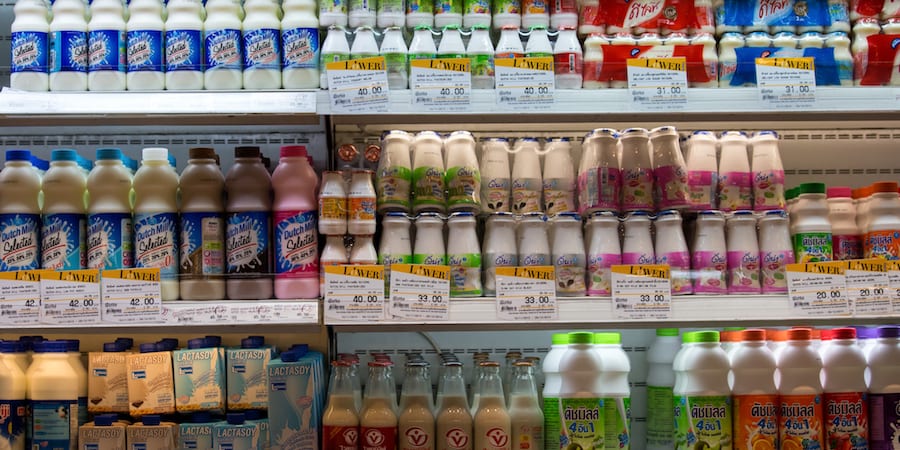
To be leaner discontinue high-volume low-sale products
FEATURE – We often think that making every product customers might want – no matter how little they sell or how much complexity they add to our schedule – is inherently lean. As Toyota understands quite well, however, it is quite the opposite.
Words: Ian Glenday, lean coach and author
So far in this series of articles the focus has been on creating and protecting levelled production cycles for the top 6% of products that account for 50% of the volume – the "greens". At the other end of the Glenday Sieve analysis are the "reds" – typically representing 30% of the products yet only 1% of the sales.
We all know lean is about eliminating waste, so why do nearly all companies allow this potential source of non-added value and complexity in their business?
Small-volume products can create problems in planning, manufacturing and the supply chain. Their demand tends to be highly variable at a percent level, making their sales volumes unpredictable. There are usually lots of reasons put forward as to why these "reds" need to be included in the portfolio (like the fact that the business should be responsive and flexible to meet demand for all products in the range, including the reds). If manufacturing has the physical ability to make them, then why shouldn't we make whatever the customer wants?
Just like Toyota, right?
Wrong. Toyota doesn't make every possible car they could make – far from it. This was brought home by an experience at a pharmaceutical company that wanted some help to implement levelled production. They had a lean program already running, supported by a retired VP from a very large global car manufacturer who was doing some consultancy work for them. He had been advising the pharmaceutical company that they needed to be able to do "one piece flow matched to market pull through takt time" – the final step of levelling. He had not been advising them to implement the initial steps of patterned production (how Toyota called "levelled production") as he appeared to be unaware of them. He said that was what his previous company was attempting to do – "just like Toyota."
I asked him if anyone at this previous company had ever calculated how many potential SKUs they had, taking into account all the possible options available when ordering a new car.
"Funnily enough, we did do that calculation," he said.
"And the answer was?" I asked.
"Three million – give or take a few thousand."
Absolutely amazing! This car company was trying to build a supply chain that could manufacture and deliver any one of three million SKUs just in time to customer demand. I asked him how many potential SKUs he thought Toyota had. "Probably about the same," he answered. Wrong again.
When a customer looks at the Toyota website to buy a new car, they are invited to design which specific car they want. There are many different options on type of wheels, seating, sound system, engine size, or body colour – everything that someone buying a car expects. The options appear endless – except that at Toyota they are actually not. Many of the possible combinations are not allowed. Many "options" are mandatory. For instance, choose an economy sized engine and you cannot also have leather seats, wooden steering wheel and fancy alloy wheels. Likewise, select a V6 3 litre sporty engine and you have to have the leather seats, wooden steering wheel and fancy alloy wheels.
Toyota has packaged the options so only certain combinations are allowed – meaning they have significantly less SKUs than it would appear at first glance. They do not make exactly what the customer may want – even if they have the ability to make all the potential combinations. It would prove just too complex and not cost effective. With most car manufacturers it is possible to order a yellow painted car. Not with Toyota (at least in Europe). They do not make yellow cars as the number of customers wanting a yellow one is just too small to bother with and be able to meet demand profitably. Most manufacturing companies have around 30% of their SKUs accounting for the last 1% of sales – the reds. Is this really sensible? Do you really want to be like Toyota? If so, stop making the "reds".
To illustrate just how non-value added and complex these reds can be here is an example from one company I worked with – who shall remain nameless to protect their blushes!
WHICH CATS PREFER PARSLEY?
A well-known global pet food company wanted to implement levelled production on one of their major manufacturing lines. It produced cat food. The Glenday Sieve analysis of the range came out as expected – 6% of SKUs equalled 50% of the volume sold. Similarly just 1% of sales equalled 30% of the product range. A typical result. They had 220 different SKUs – for cats – being produced on the same manufacturing equipment. The reason for this was quickly given: the factory supplied all the countries in Europe, each of them needing their own language label – hence all the different SKUs. This was to some extent understandable, even though multi-language labelling is used on many human products. So regarding cat food, one would have thought it would be possible to reduce the range complexity. "How many different recipes are there?" was the next question. Sixty-nine, they told me. Sixty-nine separate cat food recipes! Why so many? It turned out that each country in Europe was a separate commercial division of the business. Each could decide what "their" cat food recipes would be. There was little co-ordination between the countries on recipes. There were three unique recipes for cats in Finland! How many cats are there in Finland and what makes them different to the cats in the rest of Europe?
Speaking with the planner about the issues this number of recipes and SKUs created revealed that the minimum batch size possible, due to constraints in the processing equipment, was 150 kilograms. For the smaller-volume recipes that gave over six months of inventory! The manufacturing plant had been designed and built on the premise there would only be a limited range of high-volume standard-recipe products sold across all European countries. But now they were making 69 recipes and 220 SKUs on equipment not designed for this complexity of range.
We see this time and time again in companies. The range grows. It is produced on machinery that was not designed for small-volume products, yet the product costing system shows these items still make money. There was one last input about the issues of the range from the line operators. They were resigned to the number of recipes and the increase in the amount of clean-outs this caused – it is the way things are nowadays in companies. However, they did find one particular clean-out an issue. One of the cat food recipes had fresh parsley in it that took a lot of extra effort for the operators to get all the little green bits of parsley out of equipment. One operator observed, "I want to know which cat said it preferred parsley in its food and caused us all this extra work as a result!"
A key aim of lean is the elimination of waste – the removal of non-value adding complexity. Much effort is put into this in companies through looking at value stream maps and the like. Yet why do companies not tackle the waste and complexity in their business created by the "reds" – the 30% of products that are only 1% of sales?
My next article for Planet lean will look at another source of waste in companies that also tends to receive little attention... the "blues".
You can find out more about levelled production in Lean/RfS: putting the pieces together.
THE AUTHOR

Ian Glenday is a lean coach and sensei with experience supporting change in several industries, including chemicals, food and drink, and pharmaceuticals. He started his lean journey in the late 1970s as a micro-biologist running a fermentation plant producing enzymes, where he first began developing Lean/RFS concepts and principles for application in process industries. He later joined Reckitt & Colman, later becoming Head of Policy Deployment based in Norwich, England where substantial increases in sales per employee, market share and profit margins were achieved by applying lean across the whole company. Ian is also author of two Shingo award winning books: Breaking through to flow and Lean/RFS: putting the pieces together.
Read more


FEATURE – In this frank account, a senior executive discusses the challenges facing an oil and gas company as it tries to manage the complexity of its upstream and downstream supply chains.


WOMACK’S YOKOTEN – The Volkswagen “defeat device” scandal is the latest example of a company that has chosen to focus on growth rather than the customer. What can we learn from this, and what should we do when such a shift takes place?


COLUMN - Michael Ballé on why Toyota still inspires him in a way that no other organization can, and on the lessons lean thinkers can learn from the two most successful carmakers.


CASE STUDY – This Shared Service Center in Poland has leveraged lean, technology, and automation to completely transform itself and provide an ever-better customer experience.

